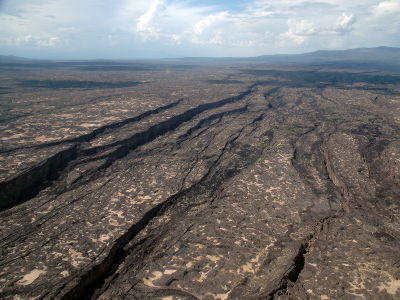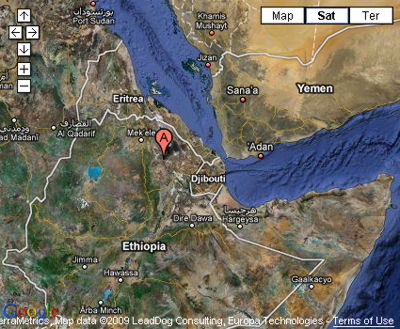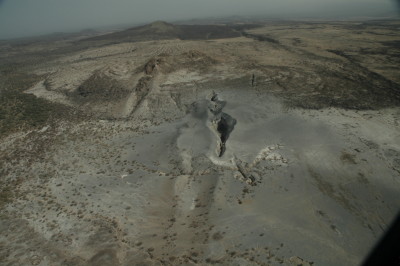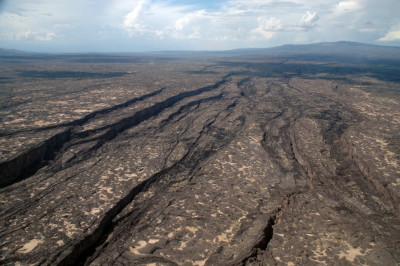A new sea is born in the desert in Africa

In 2005EthiopiaSome 35 million miles (about 56 kilometers) of cracks appeared on the desert ground, some of the geologists thought that the Africa continent would be divided from here into two and that the ocean could be here in the future It was a place where opinions were split. However, subsequent investigation seems that this crack is actually the beginning of a new sea as a consensus of the geologists of each country.
Details are as below.African Desert Rift Confirmed as New Ocean in the Making: University of Rochester News
EthiopianRutThe volcanic activity underneath is similar to that of the undersea volcanic activity of the world, scientists of several countries acknowledge that there is a high possibility that the grove is the beginning of a new sea.
Geophysical Research LettersIn the paper published in the magazine,Ocean plateIt is suggested that the extremely active volcanic boundaries of the surroundings may not necessarily move little by little as it has been hitherto known but may also split suddenly in large sections. Also, such a sudden large-scaleCrustal deformationIs one of the authors of the paper that it would pose a serious risk to those living near the grove compared to the accumulation of small activitiesUniversity of Rochester"Said Professor Cindy Ebinger of the Earth Environment Sciences.
It is predicted that this will be the future oceanic ridges.
View Larger Map
The result of this research is "BasinIt will be a breakthrough to understand how it will lead to the formation of "an epoch-making thingUniversity of California, Santa BarbaraKen Macdonald, professor emeritus of Earth science, who is not involved in this survey, says. "The activity of a single fault fragment is large,Magma intrusionAnd that it could trigger the deformation of adjacent fragments accordingly. A large-scale 2005DikesTo investigate intrusions and its aftermath in detail, the fault of the continentRidge (Kairei)It's a great opportunity to learn about. "
"The core of this research was to find out what is happening in Ethiopia is equivalent to what is happening in the ocean floor where we can not go," Ebinger said. "If that can be established Ethiopia will be the best place for ridge research, the answer is" yes "thanks to unprecedented cross-border collaborative research this time (Ethiopian fault activity and I found out that the volcanic activity on the ocean floor is similar) "
EthiopianAddis Ababa UniversityProfessor Atalay Ayele led the research and gathered detailed data on the seismic activity that led to a huge crack of 6 meters wide in just a few days in 2005. In cooperation with professor Ghebrebrhan Ogubazghi of Eritrea Institute of Technology as well as Ethiopia dataEritreaWith the cooperation of Jamal Sholan of the Yemen National Seismograph ObservatoryYemenWe also gathered the data. It turned out that cracks were not opened by stacking several small earthquakes over a long period of time, but cracks of 56 km in length were opened in just a few days. According to Professor Ebinger, it is at the northern end of the crackDabbahuIt is said that the volcanic eruption caused the magma to spread while pushing the grooves to both sides.
In the future with Eastern EthiopiaRepublic of DjiboutiIt is predicted that the part including the island will be separated from the African continent as an island. It is the Dabbahu volcano, which is the starting point of the rupture, indicated as "A" in red.

Since large-scale activities in 2005, Ebinger and colleagues set up seismographs locally, and compared with 2005 it is a small scale, but we have observed a similar phenomenon twelve times.
State of the site.

© University of Rochester

© University of Rochester
"I knew that the ridge was formed by the penetration of magma into a fault similar to this, but it was not known that such long grooves could open in one stroke," Professor Ebinger. According to the professor, since most of the place where the seabed is torn is located at the bottom of the ocean a few kilometers deep, the parts that can be observed at one time are limited, and how much length can be split at a time It seems that it was impossible for geologists to know. "The ridge is made up of a number of sections, and one section can cover hundreds of kilometers .This study has found that each section can be split open in just a few days"
Professors Ebinger and others continue to observe in Ethiopia and are going to investigate the development of the underlying magmatic system associated with the growth of the grooves.
Related Posts:
in Science, Posted by darkhorse_log







